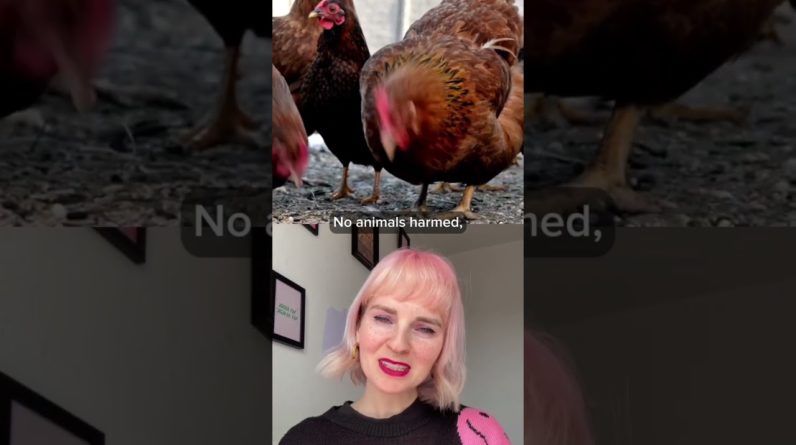Welcome to our blog, where we share fascinating stories from the natural world! Today, we are excited to present an intriguing tale about a unique behavior displayed by our feathered friends. Have you ever heard of birds stealing fur to build their nests? It may sound peculiar, but these resourceful creatures have been observed using this unconventional material to create cozy homes for their young. Join us as we delve into the fascinating world of bird behavior and discover the reasons behind this peculiar phenomenon. So, sit back, relax, and embark on this awe-inspiring journey with us!
Table of Contents
Heading 1: Bird Stealing Fur to Make Nest 🥹
Introduction
In this article, we will delve into the fascinating behavior of birds stealing fur to create their nests. This peculiar phenomenon showcases the resourcefulness and adaptability of these avian creatures. We will explore the reasons behind this behavior, the types of fur birds prefer, and the possible implications for wildlife and humans alike. So, let’s take a closer look at the world of bird nest construction and the curious habit of utilizing fur as nesting material.
Heading 2: Why Do Birds Steal Fur for Nest Building?
Birds engage in the act of stealing fur to build their nests for several reasons. These include:
- Insulation: Fur acts as an excellent insulator, providing warmth and protection for the birds and their eggs during colder periods.
- Comfort: The softness of fur creates a cozy and comfortable environment for the bird and its hatchlings.
- Camouflage: Some birds utilize fur to camouflage their nests, blending them seamlessly with the natural surroundings to protect them from predators.
- Availability: Fur is abundant in many environments, making it an easily accessible material for birds to collect and incorporate into their nests.
Heading 3: Types of Fur Preferred by Birds
Birds have distinct preferences when it comes to the types of fur they select for their nests. Some common sources of fur stolen by birds include:
- Pets: Birds often prey on pet cats and dogs, plucking tufts of fur from their coats when they are shedding. This type of fur is readily available for birds living in urban areas.
- Wildlife: Birds may also target wild animals such as squirrels, raccoons, or rabbits to gather fur. These creatures naturally shed or leave fur behind, providing an ample supply for the resourceful birds.
- Livestock: Farm animals like horses, cows, or goats also contribute to the available sources of fur birds can utilize. These animals often shed or lose fur during grooming or natural processes, making it an attractive option for birds constructing their nests.
Sub-Heading 1: Sources of Fur Gathering
The act of stealing fur can occur in various ways:
- Direct Plucking: Birds may pluck fur directly from live animals. While this may seem alarming, it is a relatively harmless act that does not cause significant harm to the animal.
- Gathered Shedding: Birds capitalize on the natural shedding process of animals and collect fur from the environment.
- Nest Material Theft: Some birds may even resort to stealing fur from other bird nests to incorporate into their own.
Sub-Heading 2: Implications for Wildlife and Humans
The practice of birds stealing fur for nest building has both positive and negative implications:
Positive Implications:
- Recycling: Birds repurpose fur that would otherwise go to waste, giving it a new lease on life within the context of their nests.
- Ecological Balance: Birds help regulate the population of certain animals by utilizing their fur for nest construction, indirectly contributing to the balance of ecosystems.
Negative Implications:
- Nest Disturbance: When birds steal fur from other nests, it may disrupt the original nest owner’s ability to incubate eggs or keep hatchlings warm.
- Missing Pets: In urban areas, birds stealing fur from pets may cause temporary distress to those animals and their owners, resulting in missing tufts of fur during shedding periods.
Conclusion
The behavior of birds stealing fur to create their nests highlights their remarkable adaptability and resourcefulness. By utilizing fur, birds enhance the insulation, comfort, and camouflage of their nests. While the act may seem peculiar, it has both positive and negative implications for wildlife and humans. Understanding this behavior allows us to appreciate the intricate relationship between birds, their environment, and the resources they utilize.
FAQs
Q: Which birds are known for stealing fur for their nests?
- A: Various bird species, including crows, magpies, and sparrows, are known to engage in this behavior.
Q: Is stealing fur harmful to the animals it is taken from?
- A: The act of stealing fur itself is not harmful to the animal as it does not cause significant damage or injury.
Q: Why do birds prefer fur over other materials for their nests?
- A: Fur provides excellent insulation, comfort, and camouflage, making it an ideal choice for birds constructing nests.
Q: Can birds distinguish between different types of fur?
- A: Birds have a remarkable ability to discern fur types based on their textural and visual characteristics.
Q: How can I protect my pets from birds stealing their fur?
- A: If you want to protect your pets from fur theft, you can keep them indoors during shedding seasons or provide them with grooming sessions to minimize loose fur availability.






